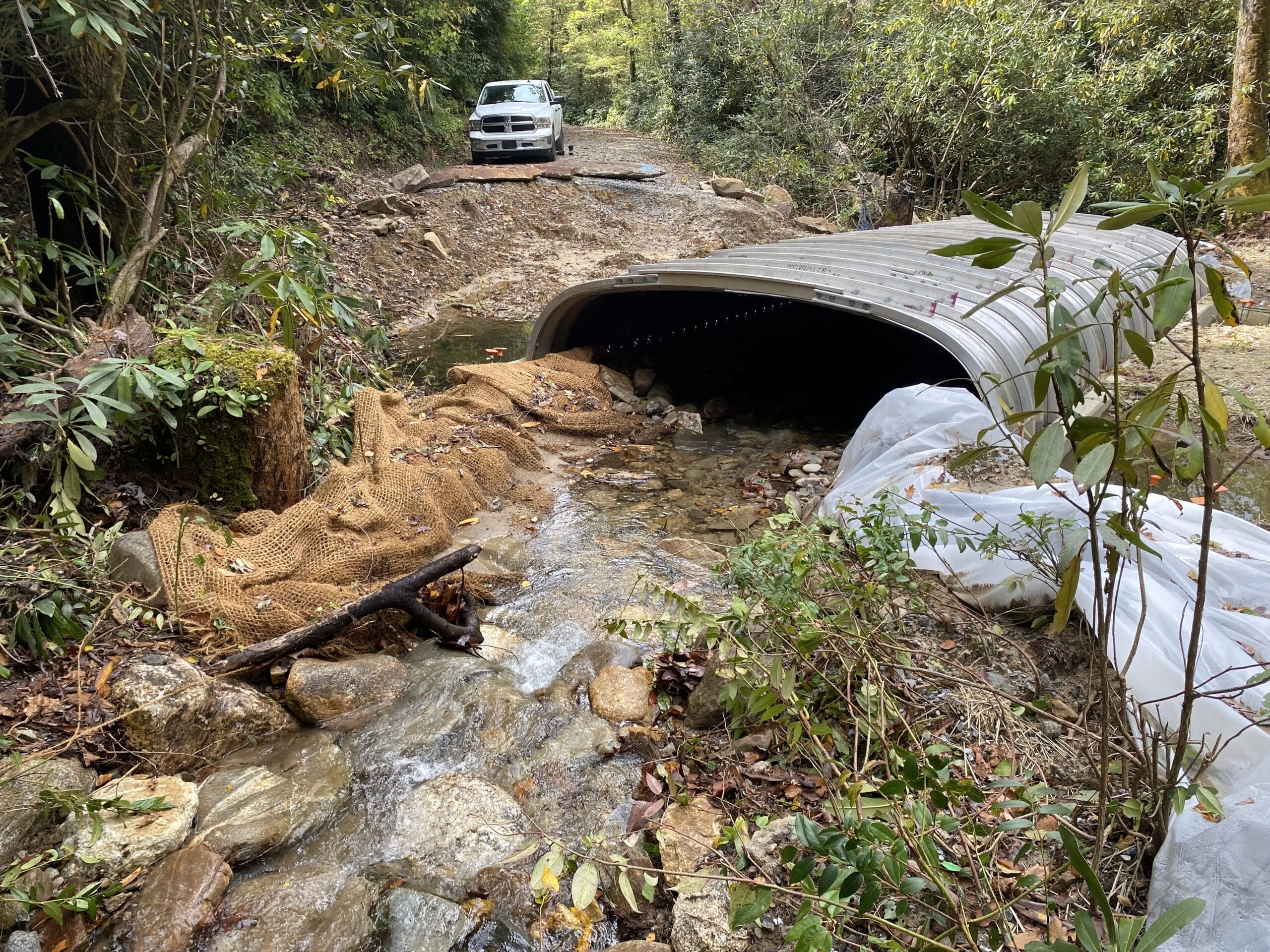When Hurricane Helene tore its path of destruction north from the Gulf of Mexico through the Southeast, there was nothing anyone could do to change the storm’s strength or its path.
But we do have an opportunity to pre-emptively address the risks storms and other natural weather events pose to our communities. We do that by making infrastructure along streams more resilient to weather and climate threats – work that not only makes communities safer but improves habitat for trout and other stream residents.
A recent generous grant to TU from the Bass Pro Shops and Cabela’s Outdoor Fund is helping with our efforts through TU’s Southern Appalachian Watershed Resiliency Initiative.
“Hurricane Helene made clear the overwhelming need to increase the pace and scale of watershed restoration to combat the threat of the more frequent and intense flood events we are seeing in the Southern Appalachians as our climate changes,” said Abby McQueen, who directs TU’s restoration work in the Southeast.
Projects to address barriers to fish passage, such as undersized culverts, are a key method to making infrastructure more resilient to floods. Across the mountainous landscape of the Appalachians, many culverts are too small to adequately handle high flows that were not anticipated when the culverts were originally designed and installed.
The $45,300 from the Bass Pro Shops and Cabela’s Outdoor Fund grant is being used to advance TU’s resiliency efforts, in part by providing matching funds to advance construction projects by TU and partners, including the U.S. Forest Service.

TU and the Forest Service were in the middle of two fish passage projects (above) in the Cathey’s Creek watershed in North Carolina when Helene arrived. Fortunately, the projects were not damaged and are expected to be completed in the coming weeks.
“Additionally, TU engineering staff advanced the design of two fish passage projects in the George Washington and Jefferson National Forest, two fish passage projects in the Chattahoochee-Oconee and two more projects in the Forests of North Carolina,” McQueen said. “That will not only lead to improved fish passage but will also lead to increase resiliency of our National Forest infrastructure.”
McQueen said TU project managers have been collaborating with Forest Service staff and other partners to develop watershed restoration action plans for additional watersheds.
“These watershed restoration action plans assess existing conditions in priority watershed and will help us develop approaches to upcoming projects,” McQueen said. “The grant from the Bass Pro Shops and Cabela’s Outdoor Fund has been critical to increasing our capacity to move this effort forward.”
The total grant was $250,000. Other TU projects and initiatives that received allocations included the new TU Expeditions teens and college student education and restoration initiative, a steelhead habitat enhancement project on Oregon’s lower Deschutes River, a Snake River cutthroat trout habitat project in the Salt River, an AOP survey effort in the Driftless Area and restoration project targeting spring chinook in Washington’s Snoquora River.



